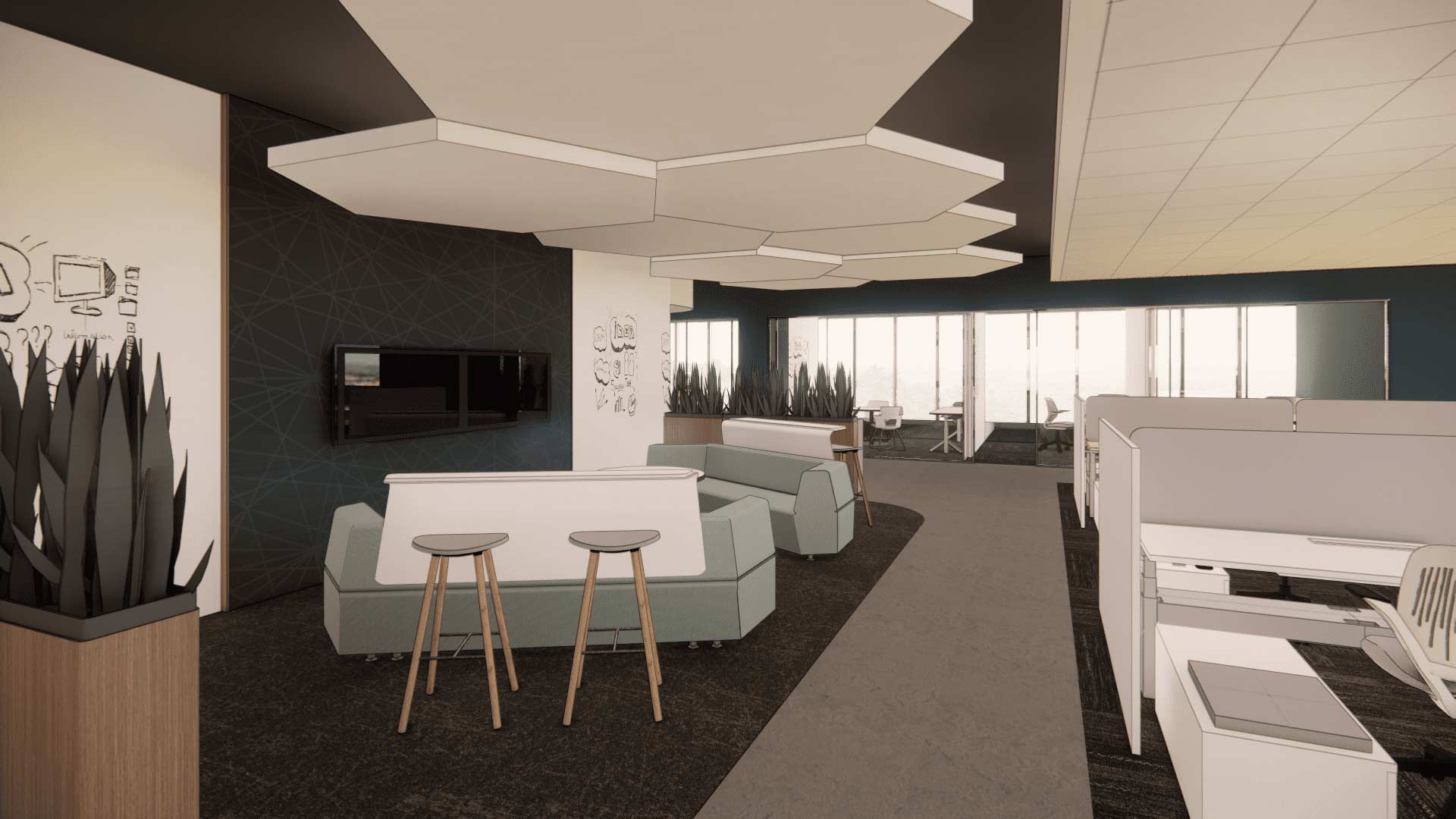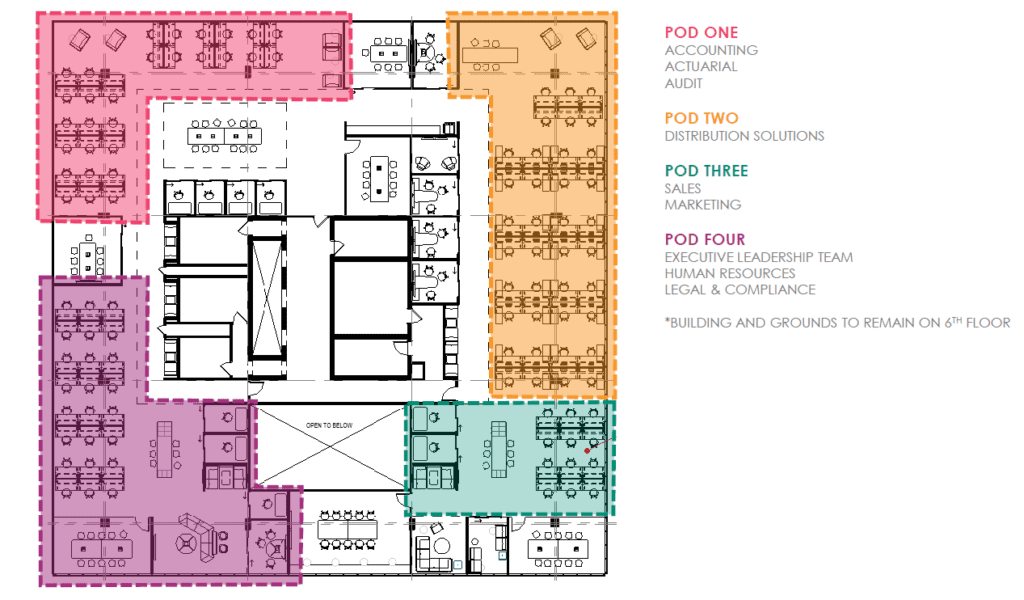Designing for the future is an investment. By placing the focus on long-term benefits rather than short-term costs, office spaces will remain flexible and fruitful – now and into the future.
This issue of SyncMagazine examines the future of office design, and Strang’s recent partnership with National Guardian Life Insurance (NGL), encapsulates our forward-thinking approach. Recognizing early on that a post-COVID workplace would look very different from their current workplace, NGL began working with Strang to start reimagining their workplace shortly after stay at home orders were issued in 2020. NGL saw the stay-at-home orders as an opportunity to reimagine, redesign, and rebuild their workplace while their staff remained safe at home. The pandemic provided an opportunity to test out how efficient the different departments would be working from home. Throughout the planning process surveys were sent out to the staff to gather data on the pros and cons of both working from home and working from this office. The information gathered from the employees and leadership transformed into three guiding principles for the project
THE APPROACH
GUIDING PRINCIPLE ONE
GUIDING PRINCIPLE TWO

GUIDING PRINCIPLE THREE
An optimized, efficient, and flexible work environment that is accommodating of current operations but is laser-focused on the future.
As we discussed in “The Future of Work: Is The Energy of Change“, these guiding principles of collaboration, autonomy, and flexibility are key facets in future office design. As office design ever evolves, this is the future we foresee.
THE PROCESS
Before designing a space, the first step is to listen to its users. Strang started our work on this project with an extensive review process including the creation of a Departmental & Priorities Survey for all employees. The primary central theme that was extracted was flexibility. NGL staff were enjoying the freedom of working from home and wanted to maintain a certain level of flexibility after the pandemic to continue working from home a few days a week.
Next, we focused on benchmarking, assessment, and analysis of both future space needs and the existing facilities. Analyzing future space needs meant designing for flexibility and crafting a space that would remain adaptive to future needs. Facility assessments were conducted that resulted in recommendations for overall accessibility, electrical, HVAC, plumbing, and life safety needs.
Space utilization analysis of the existing building office and furniture layouts also concluded that significant space inefficiencies needed to be addressed. Consequently, departmental spatial needs and headcount projections were used to calculate optimized required floor area projections. Facility assessments and space analysis helped define a space for NGL that would remain comfortable, accessible, and safe for all employees.
Utilizing all the information gathered, we then developed preliminary floor plans to demonstrate how NGL’s spatial needs fit on all floors. Based on our research, the floor plans assumed that most staff would be working in unassigned workstations/offices and that on any given day 30% of employees would be working remotely.











